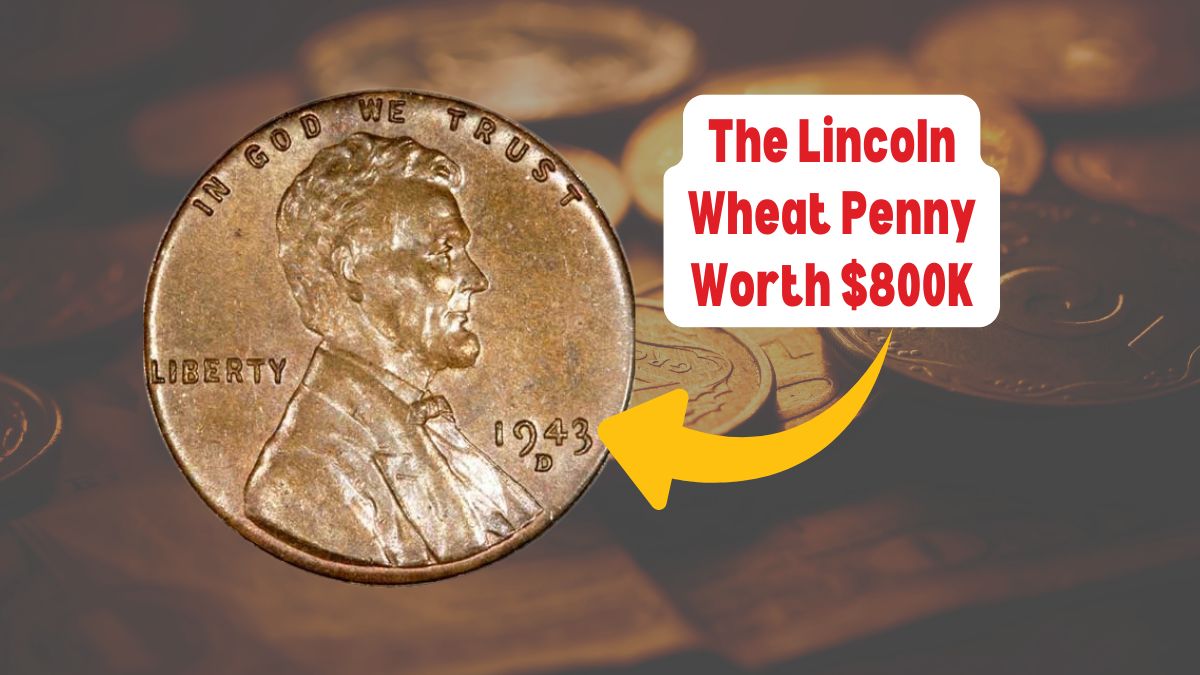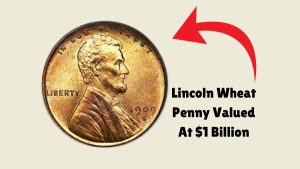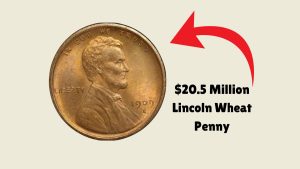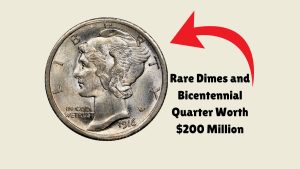The Lincoln Wheat Penny, minted from 1909 to 1958, remains a cornerstone of American numismatics. Among these, the 1943-D Bronze Lincoln Cent stands out, with a single known specimen fetching $840,000 at auction.
The 1943-D Bronze Lincoln Cent: A Wartime Rarity
During World War II, copper was essential for military supplies, prompting the U.S. Mint to produce pennies from zinc-coated steel in 1943. However, a few bronze planchets from 1942 remained in the minting presses, leading to the accidental creation of bronze pennies in 1943. The Denver Mint produced only one known 1943-D Bronze Lincoln Cent, making it exceptionally rare and valuable.
Auction Records and Value
In 2021, the unique 1943-D Bronze Lincoln Cent was auctioned for $840,000, highlighting its significance among collectors. Its value is attributed to its rarity, historical context, and the minting error that led to its creation.
Identifying the 1943-D Bronze Penny
To determine if you possess this rare coin, consider the following characteristics:
- Date and Mint Mark: The coin should display the year 1943 with a ‘D’ mint mark below the date, indicating production at the Denver Mint.
- Material Test: Unlike the common 1943 steel pennies, the bronze penny is not magnetic. A simple magnet test can help; if the coin is attracted to a magnet, it is made of steel.
- Weight: The bronze penny weighs approximately 3.11 grams, compared to the 2.7 grams of the steel version.
Other Valuable Lincoln Wheat Pennies
While the 1943-D Bronze Cent is unique, other Lincoln Wheat Pennies are also highly valuable:
- 1943-S Bronze Cent: Minted in San Francisco, one of these rare pennies sold for $504,000.
- 1944-S Steel Cent: Only two known examples exist, with one fetching $373,750 at auction.
- 1958-P Doubled Die Obverse (DDO): Approximately three known specimens exist, with one selling for $336,000.
Notable Lincoln Wheat Pennies
| Year | Mint Mark | Error/Variety | Estimated Value Range | Auction Record |
|---|---|---|---|---|
| 1943 | D | Bronze Planchet | $800,000 – $2,000,000 | $840,000 |
| 1943 | S | Bronze Planchet | $500,000+ | $504,000 |
| 1944 | S | Steel Planchet | $700,000 – $1,000,000 | $373,750 |
| 1958 | P | Doubled Die Obverse | $100,000 – $200,000 | $336,000 |
| 1944 | D | Steel Planchet | $60,000+ | N/A |
Collecting and Investing in Lincoln Wheat Pennies
For collectors and investors, the allure of Lincoln Wheat Pennies lies in their historical significance and the potential for discovering rare specimens. Key factors influencing a coin’s value include rarity, condition, minting errors, and historical context.
Tips for Collectors
- Examine Your Change: Rare coins can occasionally be found in everyday circulation. Regularly check your pocket change for any unusual pennies.
- Educate Yourself: Familiarize yourself with key dates, mint marks, and errors associated with Lincoln Wheat Pennies to identify valuable coins.
- Consult Professionals: If you believe you’ve found a rare penny, consult a reputable coin dealer or grading service for authentication and appraisal.
The story of the 1943-D Bronze Lincoln Cent exemplifies the excitement of coin collecting, where a simple penny can hold immense historical value and financial worth. Whether you’re a seasoned numismatist or a curious beginner, the world of Lincoln Wheat Pennies offers a fascinating glimpse into American history and the art of minting.
FAQs
Why were some 1943 pennies minted in bronze instead of steel?
Due to a transition to steel planchets in 1943 for war efforts, some leftover bronze planchets from 1942 were mistakenly used, resulting in rare bronze pennies.
How can I tell if my 1943 penny is made of bronze?
A bronze penny is not magnetic and weighs about 3.11 grams, whereas a steel penny is magnetic and weighs approximately 2.7 grams.
Are all 1943 bronze pennies valuable?
Yes, due to their rarity, all 1943 bronze pennies are highly valuable, with some fetching hundreds of thousands of dollars at auction.





I have two of those
I have 2 like that. How do I find out how to sell them?